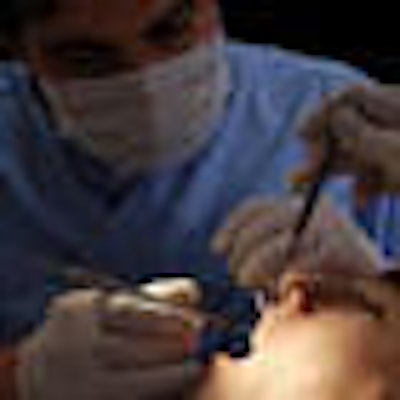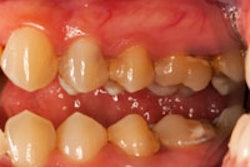
The authors of a new critical appraisal in the Journal of Esthetic and Restorative Dentistry (March 19, 2013) trace their perspective on treating caries back to the beginning of modern dentistry, even before the influences of G.V. Black.
According to Black, all dentin where decay is suspected should be removed, regardless of the risk to the pulp. But in the 19th century, James Tomes contended that it is better to leave some carious dentin in place rather than risk exposing the pulp -- and the authors of the new critical appraisal agree.
"Because we're so mired in tradition, we're not listening to evidence," explained co-author Daniel Chan, DMD, a professor and the associate dean of clinical services at the University of Washington School of Dentistry, said in an interview with DrBicuspid.com. "Sealing is as viable as total removal of the decay."
In their critical appraisal, Dr. Chan and co-author William Browning, DDS, a professor in the department of restorative dentistry at the Indiana School of Dentistry, cited several studies that support the perspective that the complete removal of all the affected dentin in deep carious lesions leads to pulp exposure, complex and higher-cost treatment, and, possibly, extraction.
"The overarching concept is that, if one seals the bacteria away from the oral fluids, the decay process will arrest," Dr. Browning stated in an email to DrBicuspid.com. "Some dentists may perceive this approach as new, experimental, and/or as second-rate care. It is none of these. This approach has been researched and is supported by the highest-levels of evidence available: several clinical trials and a systematic review. For operative dental procedures this is fairly rare."
Evidence-based analysis
One of those studies, which was also examined in the authors' critical appraisal, was a 10-year, randomized clinical trial published in the Journal of the American Dental Association (January 1998, Vol. 129:1, pp. 55-66). Researchers from the Medical College of Georgia's School of Dentistry in Augusta compared the performance two modalities for treating frank cavitated lesions: "sealed composite restorations placed directly over frank cavitated lesions extending into dentin vs. sealed conservative amalgam restorations and conventional unsealed amalgam restorations."
“If one seals the bacteria away from the oral fluids, the decay process will arrest.”
Both sealed restorations outperformed unsealed amalgam restorations with a failure rate ranging from 0.2% to 1.7% per year. "Also, the bonded and sealed composite restorations placed over the frank cavitated lesions arrested the clinical progress of these lesions for 10 years," the study authors found.
While the studies cited in the appraisal are from 2006 or earlier, a new systematic review and meta-analysis being published next month in the Journal of Dental Research lends support to Drs. Chan and Browning's perspective (April 2013, Vol. 92:4, pp. 306-314). Researchers from the department for conservative dentistry and periodontology at Christian-Albrechts University in Kiel, Germany, looked at controlled trials involving one- or two-step incomplete caries removal compared with complete caries removal.
"Based on reviewed studies, incomplete caries removal seems advantageous compared with complete excavation, especially in proximity to the pulp," the researchers wrote, while also warning of risk of bias in their included studies.
Nonetheless, Dr. Chan was relieved to see the review published so soon after this article. "When you say something controversial, you want to cover your back," he said. "I was very happy to see that article."
Provisional restorations
There are several situations where dentists should opt to partially excavate decayed dentin, according to Dr. Browning.
"Dentists should use this approach wherever complete caries removal is likely to leave less than 1 mm remaining of dentin thickness or expose the pulp," he explained. "They should use this approach in situations where a direct restoration will be sufficient; i.e., where the prognosis for a direct restoration is at least fair."
He also outlined several ways that dentistry can use the concept to its advantage. First, it is OK to seal in some incipient decay as long as the occlusal pit-and-fissure system is well-sealed.
"This also means that there is little reason to remove enamel for the sole purpose of investigating the fissure system to determine if caries is present," Dr. Browning said.
The approach can benefit both a patient who has multiple moderate to large carious lesions and financial constraints and also the practitioner. "Sometimes the pace at which patients can afford to pay and the pace at which some lesions will involve the pulp and/or make the tooth unrestorable are often incompatible," Dr. Browning explained. The dentist can opt to arrest the decay with a well-sealed restoration.
"In this situation, grossly unsupported enamel and peripheral decay only are removed and a provisional is placed -- my recommendation is a glass ionomer," he added. "Several of these provisionals can be placed in the time it would take to place one definitive restoration. Accordingly, a much smaller fee can be charged, yet the dentist is still appropriately compensated."
After the lesions are successfully arrested, the dentist can circle back and place definitive restorations.
"These provisionals result in an extra fee to the patient, but are far less costly than the cost incurred if even one of these lesions necessitates endodontic treatment," Dr. Browning said.
Patients who present with large carious lesions on one or more teeth may also have symptoms suggesting reversible pulpitis, making a precise treatment plan and accurate estimation of associated fees challenging.
"Here again, a provisional restoration can simplify the situation greatly," Dr. Browning advised. "Removal of caries at the dentin-enamel junction helps to establish whether or not the tooth is even restorable, and whether a direct or indirect restoration is needed. Removal of most of the deeper caries provides a good estimate of whether or not the pulp may be exposed."
Patient comfort, lasting results
In addition, a well-sealed provisional will initially make the patient more comfortable and promote the long-term vitality of the pulp, Dr. Browning noted. Over the next three months, the pulp's vitality or need for endodontic treatment will be clear.
"This provides an opportunity for the patient to become comfortable and the dentist to become much more confident about the long-term pulpal prognosis and the restorative needs of the patient," he said. "As a result, the dentist can provide a much more accurate treatment plan and fee estimate."
While the authors hope that this approach spreads in dentistry, there are roadblocks.
"Currently, our profession is rewarded by treatment," Dr. Chan said. "We would like dentists to think about risk assessment and tailor treatment according to the patient's risks. It is moving that way now, but it's not moving fast enough."



















